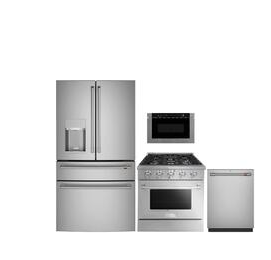Gas stoves vs. electric stoves: which is better?

You have decided that it is finally time to refurbish the kitchen, but you are faced with the age-old conundrum: gas or electric? Because we are aware that this is a very significant choice for your house, we are going to discuss the positives and negatives of each one in this post so that you may choose the kitchen that is most suited to your preferences and fulfils your requirements.
What type of kitchen to choose for your home?

There are many different kinds of cookers available today, and each one caters to a different set of requirements and preferences. For example, some cookers run on liquefied petroleum gas (LPG) or natural gas (NG), electric induction cookers, and ceramic hobs. For this reason, we have included a purchase guide in which we cover all you need to know in order to choose the appropriate alternative for your property.
Gas stoves

There is no question that gas stoves are more affordable than electric ones; however, before deciding to purchase a gas stove, you should first determine whether or not you have sufficient space in your home to accommodate it. This is because the majority of gas stove models come with an oven that is integrated into the metal structure; however, you can also find models that are recessed and can be installed on flat surfaces to maximise available space.
On the other hand, you need to make sure that you give some thought to the kind of gasoline that you will be using. It is crucial to consider this aspect before making a decision, and you should inquire with the vendor about whether or not the kitchen is equipped with LPG, NG, or both.
• Liquefied gas stoves (LPG)
These are the kinds of kitchens that are linked up to gas cylinders in order to facilitate residential usage; this is the method through which liquefied gas is now supplied to houses. This fuel is more affordable than electricity, but it is more costly than natural gas.
• Natural gas stoves (NG)
In order to have access to these kinds of kitchens, you will need to make arrangements with the local distributor to establish a connection to the natural gas pipe network. Natural gas is not only the least expensive fuel, but it also produces less carbon dioxide emissions, which means that the usage of natural gas has a smaller negative influence on the environment.
Electric stoves

Because electric kitchens are often built in or placed on counters, they are more convenient and may better take use of available space. Having said that, some models stand. In addition to this, they are differentiated from one another by the means by which they produce heat, which may be in the form of a ceramic hob or by induction.
It is important to keep in mind that these kinds of kitchens have a high consumption of energy, which is why they create a greater cost than gas kitchens do. On the other hand, they offer additional benefits, which we shall discuss in more detail below.
• Vitroceramic kitchens
Ceramic hobs provide heat by way of electrical resistances that are placed below a glass substrate. Once the whole surface has reached the desired temperature, we are able to set the cooking vessels, such as pots and pans, in order to prepare the meal.
• Induction cookers
Because they employ electromagnetic plates that create heat specifically in targeted regions as opposed to the full surface like those discussed before, induction cookers heat up much more quickly than ceramic hobs. This is due to the fact that induction cookers use these plates.










